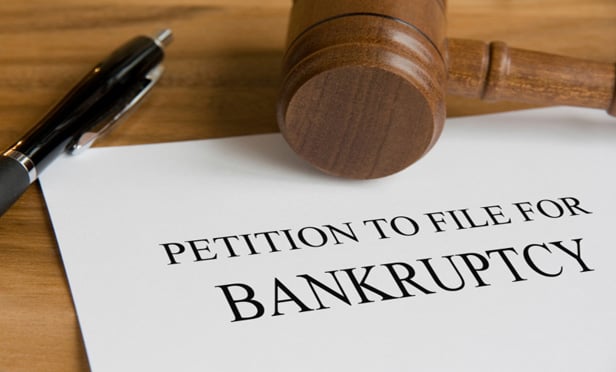Features

COUNSEL CONCERNS: Legal Fees Fallout From WWE Litigation
K&L Gates is being accused by a Massachusetts-based plaintiffs' attorney — who sued longtime K&L Gates client World Wrestling Entertainment in Connecticut federal court and is now saddled with sanctions — of making exorbitant demands for more than half a million dollars in legal fees.
Features

Office Market Recovery Brings Opportunity
The office market weathered a pandemic-fueled revolution last year, but both owners and tenants responded with impressive adaptability and endurance. Those things bode quite well for the sector's recovery.
Features

Maintaining Attorney-Client Privilege and Work Product Protections over Forensic Reports in Light of 'Wengui v. Clark Hill'
The Clark Hill opinion is notable because not only does it follow a string of recent opinions that have found data breach forensic reports not to be entitled to work product protection, it also goes one step further to find that a data breach forensic report is not protected by attorney-client privilege.
Features

California Court of Appeal Rules on Formerly Licensed Attorney Who Continued as Talent Manager
Conflict of interest is a red-flag concern when an attorney becomes a talent manager. But what happens when a formerly licensed attorney continues to provide management services for talent?
Features

Foreclosure Statute of Limitations
In a set of foreclosure cases decided in late February, the Court of Appeals resolved some of the questions that have plagued New York's court system in the aftermath of last decade's mortgage crisis.
Features

No Delay for Weinstein Victims Trust Plan
A U.S. District Court Judge for the District of Delaware judge ruled not to grant a motion that would have stayed a liquidation plan setting aside $17 million to settle with those who have claimed sexual misconduct by former film industry executive Harvey Weinstein.
Features

Just Say No: Discovery In Chapter 15 Bankruptcies Is Asymmetrical
Chapter 15 specifically allows foreign representatives to conduct discovery in the U.S., but be wary of other entities that seek to distract and/or delay the Foreign Representative from the asset search.
Features

10 Tips for Navigating the Commercial Tenant Bankruptcy Process
Retail, entertainment and hospitality have been hit particularly hard by government-mandated COVID-19 shutdowns. For many, the road ahead will end in, or lead through, bankruptcy. Bankruptcy law has a language of its own, making it challenging to navigate the process for everyone involved, including for the landlords of bankrupt businesses worried about missing rent payments.
Features

Federal Public Corruption Prosecutions
This article describes pending federal prosecutions, which level corruption charges against high-level officials, considers how the theories of prosecution in these cases might be viewed in light of court decisions in other public corruption cases, and concludes with some observations about the outer limits of federal public corruption prosecutions.
Features

Say What? Are PTAB Judges Really 'Inferior Officers'?
United States v. Arthrex, Inc. Proving that even the driest of constitutional issues can have significant practical effect, the U.S. Supreme Court recently heard argument in United States v. Arthrex. Before the Court was whether administrative judges of the PTAB have been appointed unconstitutionally.
Need Help?
- Prefer an IP authenticated environment? Request a transition or call 800-756-8993.
- Need other assistance? email Customer Service or call 1-877-256-2472.
MOST POPULAR STORIES
- The 'Sophisticated Insured' DefenseA majority of courts consider the <i>contra proferentem</i> doctrine to be a pillar of insurance law. The doctrine requires ambiguous terms in an insurance policy to be construed against the insurer and in favor of coverage for the insured. A prominent rationale behind the doctrine is that insurance policies are usually standard-form contracts drafted entirely by insurers.Read More ›
- The Brave New World of Cybersecurity Due Diligence in Mergers and Acquisitions: Pitfalls and OpportunitiesLike poorly-behaved school children, new technologies and intellectual property (IP) are increasingly disrupting the M&A establishment. Cybersecurity has become the latest disruptive newcomer to the M&A party.Read More ›
- A Lawyer's System for Active ReadingActive reading comprises many daily tasks lawyers engage in, including highlighting, annotating, note taking, comparing and searching texts. It demands more than flipping or turning pages.Read More ›
- Abandoned and Unused Cables: A Hidden Liability Under the 2002 National Electric CodeIn an effort to minimize the release of toxic gasses from cables in the event of fire, the 2002 version of the National Electric Code ("NEC"), promulgated by the National Fire Protection Association, sets forth new guidelines requiring that abandoned cables must be removed from buildings unless they are located in metal raceways or tagged "For Future Use." While the NEC is not, in itself, binding law, most jurisdictions in the United States adopt the NEC by reference in their state or local building and fire codes. Thus, noncompliance with the recent NEC guidelines will likely mean that a building is in violation of a building or fire code. If so, the building owner may also be in breach of agreements with tenants and lenders and may be jeopardizing its fire insurance coverage. Even in jurisdictions where the 2002 NEC has not been adopted, it may be argued that the guidelines represent the standard of reasonable care and could result in tort liability for the landlord if toxic gasses from abandoned cables are emitted in a fire. With these potential liabilities in mind, this article discusses: 1) how to address the abandoned wires and cables currently located within the risers, ceilings and other areas of properties, and 2) additional considerations in the placement and removal of telecommunications cables going forward.Read More ›
- The New York Uniform Commercial Code Comes of AgeParties in large non-consumer transactions with no connection whatsoever to New York often choose its law to govern their transactions, and New York statutes permit them to do so. What most people do not know is that the New York Uniform Commercial Code is outdated.Read More ›
